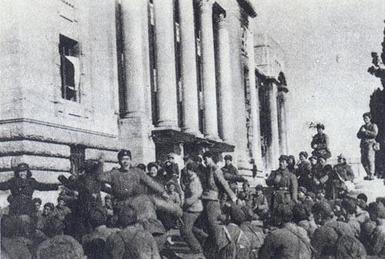On January 4, 1951, the Chinese People’s Volunteer Army captured the South Korean capital of Seoul in a decisive battle during the Korean War. This momentous event marked a major turning point in the conflict, as it marked the beginning of a series of battles that would eventually lead to an armistice between North and South Korea.
Background of the Conflict
The Korean War began on June 25, 1950, when North Korean forces invaded South Korea. In response, U.N. forces led by General Douglas MacArthur launched a counteroffensive to push back the North Koreans and protect South Korea’s independence. This effort was successful at first; by October 1950, U.N. forces had pushed all the way to the Yalu River on China’s border with North Korea.
However, this success did not last long—on November 26, 1950, Chinese forces crossed into North Korea and joined the fighting alongside their allies from Pyongyang. Unexpectedly outnumbered and outgunned, U.N forces were forced to retreat southward toward South Korea’s capital city of Seoul in order to regroup and reorganize themselves for further action against their new enemies from Beijing.
The Battle for Seoul
In December 1951, Chinese forces began their offensive to capture Seoul from U.N forces stationed there; however, they were met with fierce resistance from both American soldiers and South Korean troops determined to defend their beloved city from invasion by any means necessary. After two weeks of intense fighting around its outskirts, Chinese troops finally breached Seoul’s defenses on January 4th; by January 12th they had completely taken over the city itself and began pushing southward again towards Pusan to continue their advance along the Korean Peninsula towards Japan.
This was the first major victory of the Chinese military in their involvement with the war, and it marked the beginning of a long, hard fight for control over Korea. The capture of Seoul did not come without cost, however, as many civilians and soldiers alike suffered greatly during the conflict. In addition to those killed in battle, millions more were displaced from their homes and forced into refugee camps.
The loss of Seoul meant that the United Nations forces now had to retreat further south on the Korean peninsula. However, this soon changed when General Douglas MacArthur launched his daring amphibious assault at Inchon on September 15th, 1950. With this surprise attack, he succeeded in liberating South Korea from communist control and pushing them back across the 38th parallel.
In the aftermath of Inchon, Chinese forces launched a massive counter-offensive known as the “Chinese Spring Offensive” which involved almost 1 million soldiers and was aimed at retaking Seoul. The fighting was intense and bloody, as both sides suffered heavy casualties. However, when it became clear that the UN forces had superior air power, the Chinese were eventually forced to retreat back across the 38th parallel on January 4th, 1951.
The capture of Seoul by Chinese forces in January 1951 marked a major turning point in the Korean War and firmly shifted control over the peninsula into United Nations’ hands. Although many lives were lost during this conflict, it ultimately led to South Korea being liberated from communist rule and helped to lay the foundations for a peaceful and prosperous future. As such, it should never be forgotten and serves as an important reminder of the sacrifices made by many during this time.
Conclusion
The Battle for Seoul was one of many decisive battles fought during the Korean War; it marked a major turning point for both sides as it allowed Chinese forces to gain enough momentum to continue pushing forward into South Korea while also giving U.N forces enough time to regroup and reorganize before continuing their fight against China’s advancing armies. Although this battle may have been lost by one side or another depending on who you ask, its significance cannot be denied—it is remembered today as one of many key moments that shaped modern history in East Asia forevermore.

